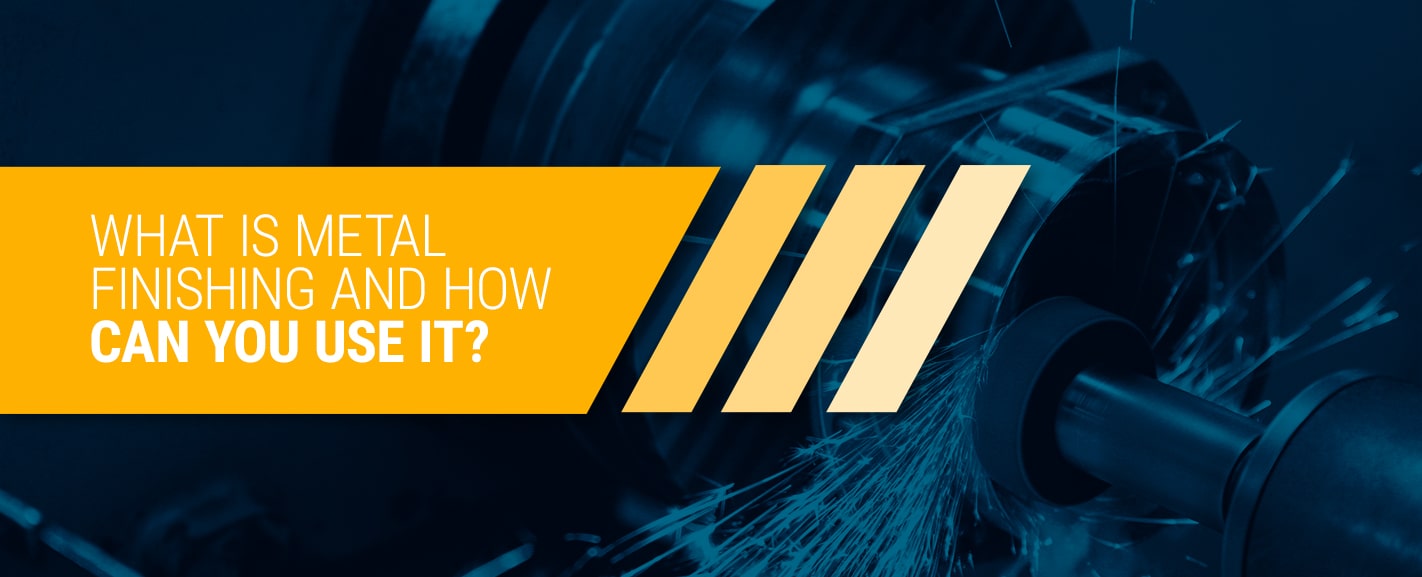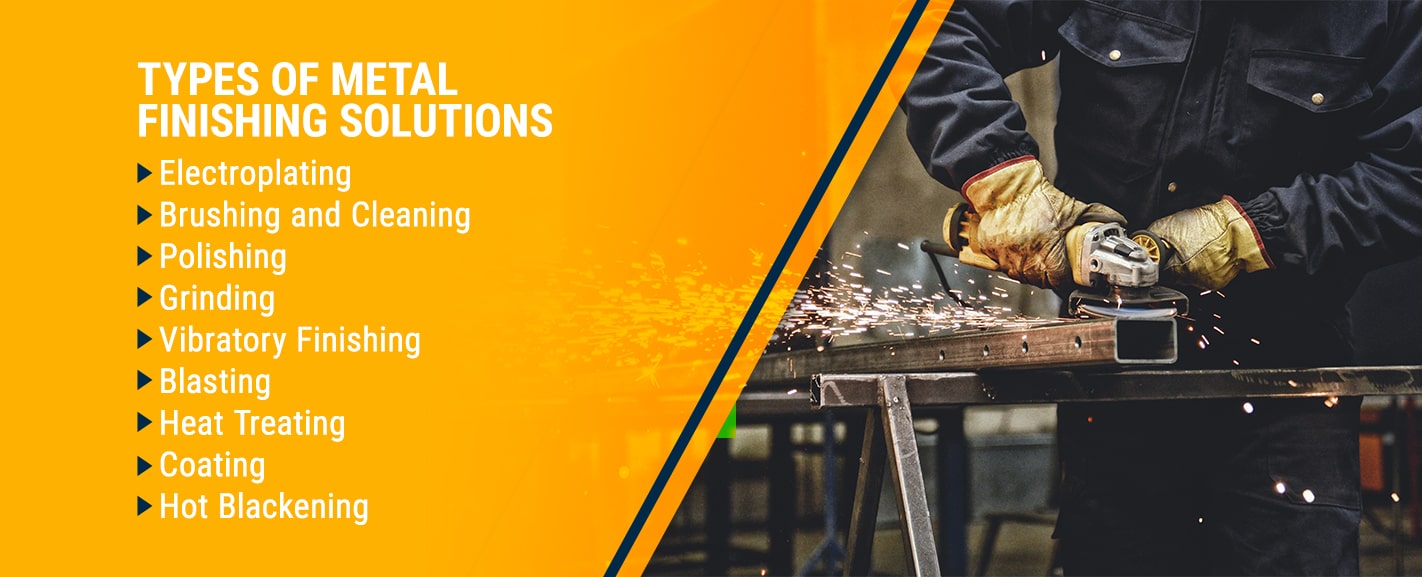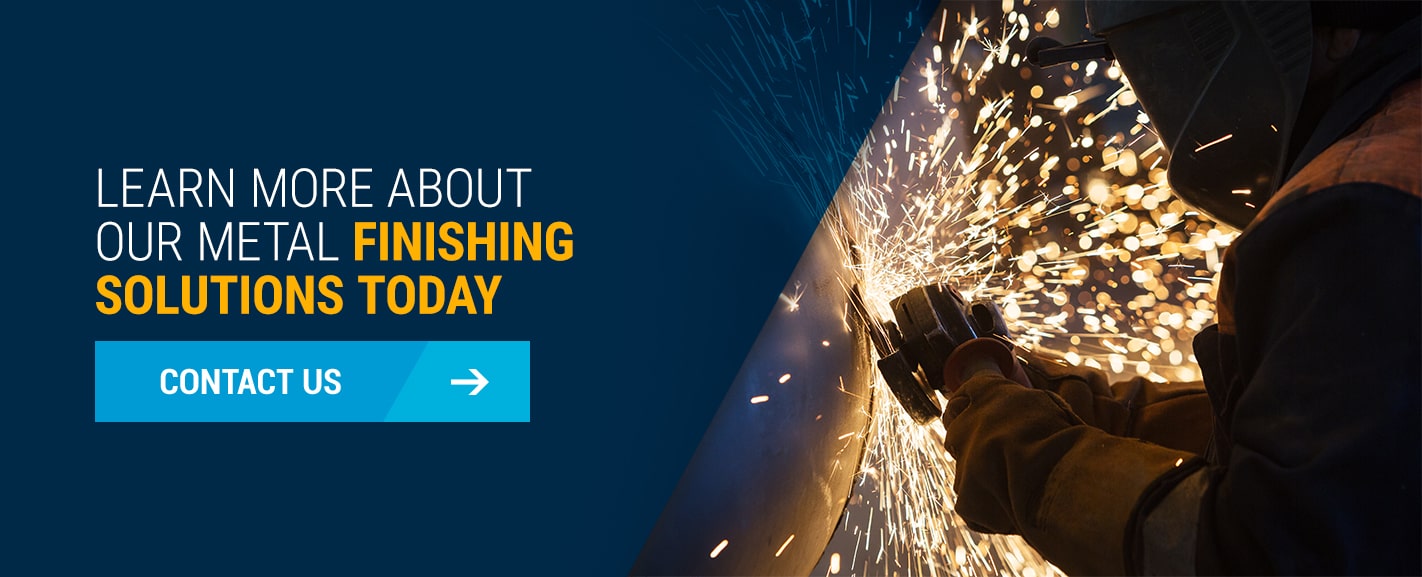
What Is Metal Finishing and How Can You Use It?
Updated: June 27, 2022Metal is one of the most prevalent and important materials in the world. It’s in practically everything we use in the 21st century. Common metals like copper, zinc, nickel, tin and lead and precious metals like silver, gold and platinum each have unique properties and purposes — and weaknesses.
Metal finishing addresses these potential weaknesses and helps increase the strength and capabilities of the metal products we rely on every day. Learn more about how these wide-ranging finishing processes work and find the right solution for your products.
What Is Metal Finishing?
Metal finishing consists of putting a metal coating on a metallic part or surface, known as a substrate. Finishing encompasses several different methods, each with unique benefits and results. Some finishing processes change the abilities or purpose of the substrate, while others just clean the surface or improve its aesthetic appearance.
How the metal finishing process works depends on the specific method you use. One common process is plating, which includes applying a thin metallic coat to the surface of a product. While plating is often synonymous with finishing, a wide range of finishing methods are available with particular advantages.
Why Use Metal Finishing for Your Products
All types of metal finishing offer benefits that enhance your metal products in industrial and aesthetic ways. While the advantages depend on the particular process you use, general benefits of finishing include:
- Strengthen the substrate: An additional exterior layer increases wear resistance and help protect your products to ensure they last longer.
- Reduce effects of friction and corrosion: A metal coating limits the impact of corrosion and friction on the substrate.
- Create electrical conductivity: Certain finishes will make your product’s surface electrically conductive.
- Enhance chemical resistance: An extra coat increases the substrate’s ability to withstand exposure to certain chemicals.
- Upgrade appearance: Many finishes or coatings provide a brushed or polished look.
- Improve paint cohesion: The finish can serve as a primer coat that allows you to apply paint to your products.
- Clean the surface: Basic finishes clean the substrate and can remove surface defects.

Types of Metal Finishing Solutions
While people sometimes use terms like “plating” and “finishing” interchangeably, there are numerous metal finishing solutions available that work in different ways and offer varying results. Check out the most common types of metal finishing solutions so you can decide which is right for your operations.
Electroplating
One of the most popular finishing solutions, electroplating is also known as electrodeposition. This method consists of depositing metal or a metal alloy onto a substrate’s surface. An electric current passes through a liquid bath made of the metal and substrate’s dissolved ions, coating the surface. While most commonly used for metal materials, electroplating can be used for some plastic and non-metallic surfaces as well.
This method requires specific and professional expertise. Proper electroplating will improve the durability, corrosion resistance and appearance of your products.
Brushing and Cleaning
Rather than adding a layer, brushing and cleaning address the substrate’s existing surface. Brushing and cleaning machines clean the product’s surface and get rid of small imperfections in the metal. A belt or wire brush creates a uniform appearance and eliminates excess material or debris. An acid or chemical bath typically completes the cleaning process, removing any leftover residue and leaving you with an aesthetically pleasing product.
Polishing
Polishing can smooth your metal products and provide a glossy finish. There are two common types of polishing — electropolishing and buff polishing.
Electropolishing, as the name suggests, uses an electrochemical reaction to create a clean, polished surface. This process is the opposite of electroplating — polishing removes ions from the substrate rather than adding another layer.
Buff polishing is a more traditional method consisting of a belt machine that buffs the surface of your metal product. Manufacturers often implement buff polishing to give materials a shiny, decorative appearance.
Grinding
Similar to polishing, grinders smooth materials with abrasive pressure. Common grinding machines include surface grinders, Blanchard grinders, centerless grinders and even types of hand grinders, each of which utilizes a different technique to provide the even finish you’re looking for. Grinding is often a final step in the finishing process, removing debris from the substrate surface and creating a better appearance.
Vibratory Finishing
Vibratory finishing machines use the friction caused by vibrations to clean, polish or deburr metal materials and parts. This wet or dry process, depending on the application, will offer cleaner, more effective and lasting parts for your products. Vibratory finishing can handle a large volume of parts at one time, making it a cost-effective finishing solution. Learn more about mass vibratory finishing equipment from Finishing Systems.
Blasting
Abrasive blasting is an effective way to clean, deburr, scale, polish or otherwise improve your metal parts and products. Blasting typically relies on either pressurized air or a motor-driven wheel to propel a stream of materials against an object. The stream excises unwanted materials and leaves your product with the desired finish. Finishing Systems offers blast equipment solutions for your operations.
Heat Treating
Heat treatments are an essential step in many metal manufacturing processes. You can use heat treating to create desired characteristics in metal products after they’ve reached their final shape. Hardening the material with heat increases its strength and wear resistance, creating a more durable product. Heat treatments sometimes involve cooling materials to achieve the desired hardness or softness.
Heat treating also removes residual stresses and other defects from metal materials.
Coating
Depending on your product, you may have coating options beyond electroplating. Other types of coatings for metal finishes include paint layers and powder coatings.
Powder coating uses a polymer powder to create a glossy, matte or textured surface on a substrate. This decorative finish has increased durability compared to paint, can hide surface imperfections and offers low-cost protection against corrosion and wear. These dry powder coatings are often thicker than liquid layers, and you can apply them to non-metallic materials like plastics as well.
Hot Blackening
Hot blackening is a method typically used when you want a black, matte finish on your metal parts or components. After getting a layer of black oxide, the product goes through tanks of various coolants and cleaners. Hot blackening offers a sleek appearance and improved abrasion resistance to ensure your materials last. You’ll often find this method used in automotive, firearm, military and tool applications.

Learn More About Our Metal Finishing Solutions Today
When you’re looking to develop your metal manufacturing process or find a new finish for your products, the options are endless. Consider the industrial purposes and aesthetic look you want to achieve, then contact Finishing Systems to get started. We offer finishing services and custom equipment to ensure you create the products your customers need.
Reach out to us online or call 800-582-3693 for more information today!
